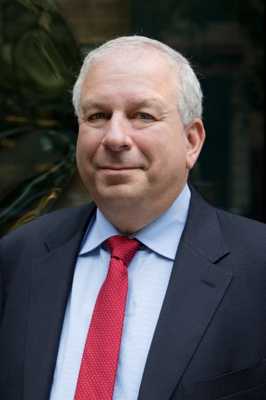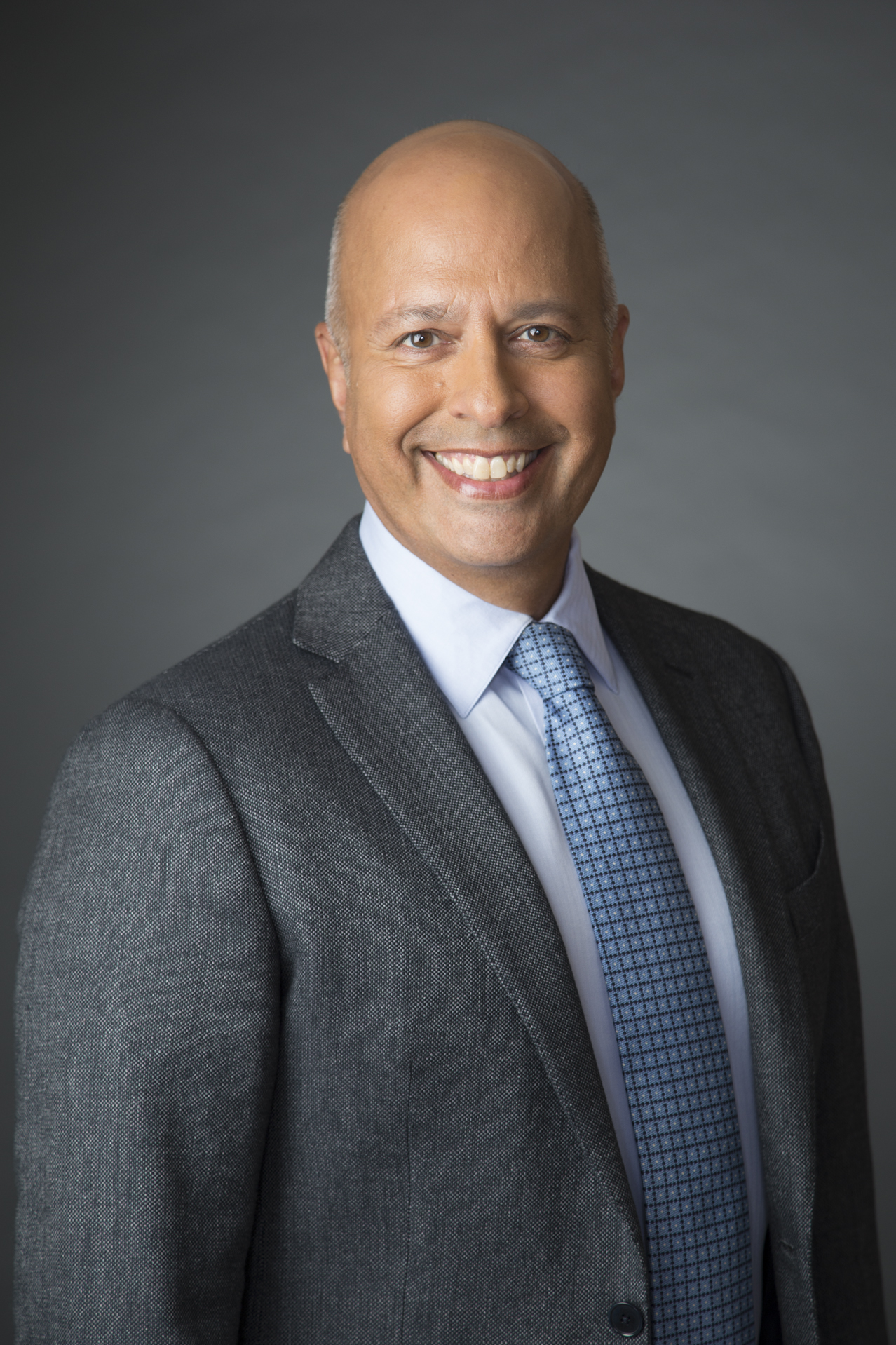Transcripts

Erik: Joining me now is Rosenberg Research founder David Rosenberg. Rosie, it's great to get you back on the show. Last time I had you on, the message was: hey, the bear market is probably not over, the final low is probably not in. And the people who are celebrating that it's all unicorns and roses from here probably have the message wrong. I still want to believe that's true. But gosh, look at this S&P chart. What do you make of this?
David: Well, I think that it has to be said that we have not made a new high for the S&P500. Despite all the efforts and achievements by The Magnificent Seven, it's been almost two years now that we last had a peak in the broad market. So I find it fanciful, when people say to me that we have entered into a new bull market, I think that we have just been range trading for the better part of the year. We know that when you look at the S&P500 equal weight index, which really is a proxy for the average stock, or the median stock, it's done diddly squat all year long. I mean, all the heavy lifting has been in the mid cap tech stocks. And this remains one of the most concentrated markets we’ve had in our hands since the late 1990s, with the.com and broad technology craze. So I would say that there's no evidence, notwithstanding the fact that we've had a nice seasonal, short covering rally that the bear market is over, I think that we've really just been sitting on a shelf. And the market seems to believe that we're going to be in a prolonged soft landing, because we've been in one all year long. So I think that the big surprise, especially for a market that's pressing up against the 19 Ford multiple, that the recession that was delayed was not derailed. And I think that you're going to be finding in the next four quarters, these earnings estimates that you could say have helped underpin the market are going to be ripe for a sequence of declining expectations on the earning side. So the bottom line here is that, what is still not priced in, really that any asset class, maybe it's starting to filter into the oil market. What more important price is there than the oil price? Which is telling you a story, I think of the demand side, So I think that the bear market is still here. We've had intermittent rallies in the context of what is still a bear market, and the answer is no, especially if we get a recession, which I believe is the base case, I think that the ultimate low still lie ahead.

Erik: Joining me now is Tressis chief economist and author Daniel Lacalle. Daniel, it's great to get you back on the show. I want to start with the big picture here of boy, we've had so many guests on this program telling us, okay, the bottom is not in for the bear market, the hard landing is coming, the recession is just around the corner. But boy, look at this S&P chart, it sure seems like the market didn't get the memo. And the recession that everybody's been anticipating for a couple of years now, a lot of people say it's already happened. But boy, it's not showing up in the market data what's going on?
Daniel: Well, I think that there's a combination of looser monetary policy than what many anticipated. And an additional element of a more benign view about inflation. I think that basically, if we look at what should have been 2023, many expected a much larger contraction and money supply in the balance sheet of central banks. If you look at the balance sheet of the Federal Reserve, it's still 50% of GDP, same in the case of the sorry, 30% of GDP in the case of the Federal Reserve, 50% in the case of the ECB. And if you look at, for example, the window of liquidity that the Fed provides, it's gone from $20 trillion to $220 trillion. So we are in a much larger expansionary phase, precisely because monetary policy is significantly looser than what people may have expected. On top of that, inflation is coming down slowly, but to a level in which market participants seem to be happy to perceive that there will be a sort of soft landing. I think that the market is happy to believe in the soft landing narrative, despite the weakening of macroeconomic indicators, and is happy to take more risk. Assuming that if things get worse on the macro level, central banks will massively inject liquidity and therefore lead to multiple expansion. And this, I think, it's very evident. For example, if we see what the S&P500 equal weighted is doing, the S&P500, as you know, is rising. However, it's being led by seven stocks. If we look at an equal weighted S&P500, it is actually showing a pretty dire environment that is more consistent with a weak economy, with weak prospects for the economy, and persistent inflation. So, I think that the market is not so, let's say, optimistic. I think that what the market is more focused on is on the idea that if central bank liquidity injections remain, and the policy is accommodative, which it is, and we saw it with the Silicon Valley Bank, and regional banker crisis, then it's better to take risks in the long duration, equity assets like technology, etc.

Erik: Joining me now is ECRI co-founder Lakshman Achuthan. Lak prepared a slide deck to accompany this week's interview. Registered users will find the download link in your research roundup email. If you don't have a research roundup email, it means you haven't registered yet at macrovoices.com. Just go to our homepage macrovoices.com, click the red button above Lak's picture that says looking for the downloads. Lak, it's great to get you back on the show. I'm really looking forward to this because boy, last time we spoke, the long awaited recession was still on deck. We were still expecting it, you thought a hard landing was much more likely, as did I. We saw at that point the stock market was really turning down. Well guess what? It's turned back up again, which a lot of people didn't expect back up above the 200 day moving average. It's kind of causing some people to question whether or not that hard landing is still on deck, is it?
Lakshman: You know I think it is. Thanks for having me back. But I think it still is on deck. We spoke in August. You're absolutely right. We thought a hard landing is more likely. We've been continuing to work through all this post-COVID and kind of structural crosscurrents that were in the mix that we were talking about back then. And we continue to rely on our cyclical framework to kind of see the path forward, including: is there a real acceleration? Is there a soft landing taking shape? And when we look at the cyclical indicators, it doesn't seem to be in sight, yet. So the market is hopeful, as you said, it's been working up different narratives of kind of threading the needle with inflation coming down, yet growth not coming down that much. And that's a hard needle to thread. I brought a whole bunch of stuff for us to talk about today, to kind of help listeners and all of us see what we're looking at in terms of these cyclical indicators. And at the end of the day, I hope there's some more clarity on the direction of where growth and inflation are going, both in the US and abroad.

Erik: Joining me now is Goehring and Rozencwajg co-founder Leigh Goehring. Leigh, it's great to have you back on the show, we've got an exciting topic that's a little off the beaten path for today's show, which is the connection between commodity prices and changes in monetary policy regime. Now I'm sure a lot of listeners are going, what? Why don't you start by explaining what does commodity prices have to do with monetary policy?
Leigh: That's a really good question, Erik. And the answer is, I really don't know. However, as I'll explain, as I go through my talk today, is that we're now entered into a situation where commodity prices are radically depressed relative to financial assets. And, in fact, they've never been more depressed than where they are right now. And if you go back over the last 120 years, which really represents the modern financial world that we live in, there's only been three times previous to this instance, where commodity prices have been this depressed.
Erik: And what do you mean by this depressed, depressed relative to what?
Leigh: Relative to financial assets and primarily, say, just use a broad index like the Dow Jones Industrial Average. And what you do is you look at the returns of what commodities have produced relative to the level of the stock market. And going all the way back to 1900, that it turns out, like I said, there's only been three periods previous to this were commodities that have been as cheap relative to financial assets, in this case, represented by the Dow Jones Industrial Average. And what were those three periods, the three periods were the late 1920s, the second period was the late 1960s, and the third period was the late 1990s. And then you have today, which is basically represented starting in like 2019 to 2021.

Erik: Joining me now is Rory Johnston, founder and CEO of Commodity Context. Rory, it's great to have you back on the show. Our listeners frequently request your return on Twitter to discuss the Strategic Petroleum Reserve, which we'll delve into in today's interview. However, I'd like to begin by addressing the question of supply balance. Essentially, many industry experts, including Goldman Sachs and JP Morgan, anticipated a significant oil supply deficit in Q3 and Q4, possibly around 2 to 3 million barrels per day. This would have been a major development. Yet, it seems that this deficit did not materialize or started to do so in Q3 but has now faded. We're not observing substantial reductions in EIA inventory. What could explain this discrepancy, and why did experts expect a 3 million barrel per day imbalance? Is such an imbalance real? And if so, why isn't it reflected in the data?
Rory: Well, so this is the strange thing happening right now. So I run my own global oil demand and supply balances as well, just to kind of give myself a sanity check on these estimates put out by the big outlets, and my data is also showing very considerable deficits, at least since May and June and continuing right through to August and September, where the last data that I have is kind of tabulated for. So the balances, like the deficits, are there in the data. But I think it's pretty reasonable to say that no one looks at the market right now and says it's a market that looks like it's 3 million barrels a day in deficit. So I think there are probably a couple of places where you begin to see leakage away from that, call it paper deficit, to a real tangible deficit in the market. I'm sure we'll talk more about Iran later. But I think, you know, looking at a couple of easy examples, understated Iran production levels, I think are one area where you could probably get 200-300,000 barrels a day of extra balance on the supply side. I think China is a massive question right now, I think Chinese demand looks exceptionally strong, which definitely seems to be holding up the entire demand side of the world at the moment.
But on the other side, it does definitely seem to be running kind of orthogonal to the broader macroeconomic data and narrative we're seeing coming out of China, you know, vis-a-vis the economic slowdown, the issues in real estate, and kind of the traditional heavy industry sector. So I think all of that, all I'm trying to say here is that the supply-demand balances that we all love so much, as you're saying, are useful tools. But I think when you see realized outcomes in the market differ considerably from what you'd expect in the balances, you can get to look and say, okay, something's wrong. And you'll begin to start, you know, questioning and kind of troubleshooting essentially, like, what's wrong with the model? And I think, you have to kind of look through all those things.
And the questions around, you know, where are the biggest question marks? Well, you have things like that China demand and Iranian supply. You also have stuff around things like, for instance, that EIA data, which is a kind of a constant kind of talking point in the market, this is crude oil supply adjustment, which was very, very large, and particularly in the weekly data that one follows so closely. But what do I think the first thing that's important to note is that a positive, you know, crude oil supply adjustment in and of itself, people always talk about it as this bullish factor, but it is definitively a bearish factor. It means that the data you're seeing, the data we include in our models, is either understating supply or overstating demand. And I think most likely, and what the EIA is on investigation to found is a little bit of both. When they looked into this, the two major factors they identified as driving this crude oil supply adjustment higher were one, basically an understanding of blending demand or barrels of natural gas liquids, they were effectively being counted as crude, either in exports or in input into refineries. And the other thing is essentially an understatement.
So basically, you're overstating demand because this blending demand wasn't really demand, it was just kind of coming back into the supply side. So what they did was create these transfers to crude oil supply column in their balances. And this has reduced demand, in particular, by about six or 700,000 barrels a day, which I think is, again, these big chunks, notably go towards closing that balance and making this data make more sense, especially since these adjustments exploded more recently, so they're going to have a larger impact on more recent data. The other thing that we still know is that, that was only part of it and they've begun adjusting that in the monthly data, and they will begin trickling through to the weekly data in December. But then there's also this question of this understated production, they probably have kind of maybe 300,000 barrels a day more there, where that will begin to be upgraded and go forward as they're planning in March, I believe. So those are a couple of things that you start to whittle away at that balance, but I think the bizarre thing is that even all that together, it still looks like a reasonably tight market on paper. And it looks like a reasonably tight market, if you're looking at things like calendar spreads, not quite as tight as we were at the kind of peak of prices at the end of September, but still, you know, very backwardated. You know, Brent today is trading at like a buck and a quarter a barrel versus prompt versus the second month. WTI is a little bit weaker, but still in that kind of clearly backward area. And I think, inventories, like you were saying, total petroleum inventories aren't as hot as you would have expected. But crude inventories continue to decline or at least range trade sideways, when they should be building at this time of year in the US data. So it looks like the crude oil is tight, looks like the diesel market is reasonably tight, but you then have these like pockets of very weak conditions in natural gas liquids, in gasoline, etc. So it's a very, very messy market. But I think it's, you know, looking at everything, it still looks like crude is at least reasonably tight, even if it's not, 3 million barrels a day tight.
MACRO VOICES is presented for informational and entertainment purposes only. The information presented in MACRO VOICES should NOT be construed as investment advice. Always consult a licensed investment professional before making important investment decisions. The opinions expressed on MACRO VOICES are those of the participants. MACRO VOICES, its producers, and hosts Erik Townsend and Patrick Ceresna shall NOT be liable for losses resulting from investment decisions based on information or viewpoints presented on MACRO VOICES.
